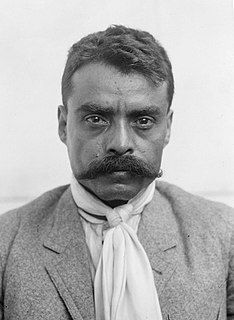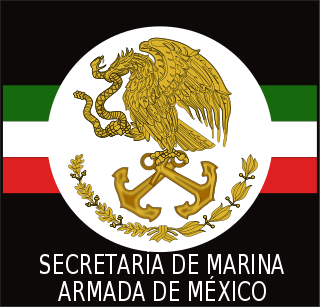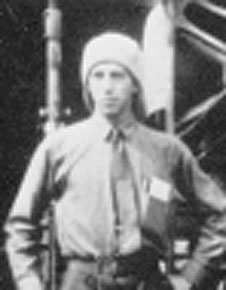
Emiliano Zapata Salazar was a Mexican revolutionary. He was a leading figure in the Mexican Revolution of 1910–1920, the main leader of the people's revolution in the Mexican state of Morelos, and the inspiration of the agrarian movement called Zapatismo.

The Mexican Revolution was a major revolution that was not a unified struggle, but an extended sequence of armed regional conflicts. It has been called "the defining event of modern Mexican history." It destroyed the Federal Army and replaced it with a revolutionary army, transformed Mexican culture, and the government. It also resulted in a new constitution that incorporated goals for which the revolutionaries fought. The northern Constitutionalist faction prevailed on the field of battle and aimed to create a strong central government, with revolutionary generals holding power from 1920-1940. The revolutionary conflict was primarily a civil war, but foreign powers, having important economic and strategic interests in Mexico, figured in the outcome of Mexico's power struggles. The United States played an especially significant role.

José Venustiano Carranza de la Garza was a wealthy Mexican land owner and politician who was Governor of Coahuila when the constitutionally-elected president Francisco I. Madero was overthrown in a February 1913 rightwing military coup. Known as the Primer Jefe or "First Chief" of the Constitutionalist faction in the Mexican Revolution, Carranza was a shrewd civilian politician. He supported Madero's challenge to the Díaz regime in the 1910 elections, but became a critic of Madero once Díaz was overthrown in May 1911. Madero did appoint him the governor of Coahuila. When Madero was murdered during the February 1913 counter-revolutionary coup, Carranza drew up the Plan of Guadalupe, a purely political plan to oust Madero's successor, General Victoriano Huerta. As a sitting governor when Madero was overthrown, Carranza held legitimate power and he became the leader of the northern coalition opposed to Huerta. The Constitutionalist faction was victorious and Huerta ousted in July 1914. Carranza did not assume the title of provisional president of Mexico, as called for in his Plan of Guadalupe, since it would have prevented his running for constitutional president once elections were held. His government in this period was in a preconstitutional, extralegal state, to which both his best generals, Álvaro Obregón and Pancho Villa objected. The factions of the coalition against Huerta fell apart and a bloody civil war of the winners ensued, with Obregón remaining loyal to Carranza and Villa, now allied with peasant leader Emiliano Zapata, breaking with him. The Constitutionalist Army under Obregón defeated Villa in the north, and Zapata and the peasant army of Morelos returned to guerrilla warfare. Carranza's position was secure enough politically and militarily to take power in Mexico City, although Zapata and Pancho Villa remained threats. Carranza consolidated enough power in the capital that he called a constitutional convention in 1916 to revise the 1857 liberal constitution. The Constitutionalist faction had fought to defend it and return Mexico to constitutional rule. With the promulgation of a new revolutionary Mexican Constitution of 1917, he was elected president, serving from 1917 to 1920.
The Tampico Affair began as a minor incident involving U.S. Navy sailors and the Mexican Federal Army loyal to Mexican dictator General Victoriano Huerta. On April 9, 1914 sailors had come ashore to secure supplies and were detained by Mexican forces. Commanding Admiral Henry Mayo demanded that the U.S. sailors be released, Mexico issue an apology, and raise and salute the U.S. flag along with a 21 gun salute. Mexico refused the demand. U.S. President Woodrow Wilson backed the admiral's extraordinary demand. Mexicans of all factions of the Mexican Revolution united against the U.S. demands. The conflict escalated when the U.S. took the port city of Veracruz, occupying it for more than six months. This contributed to the fall of Huerta, who resigned in July 1914. Since the U.S. did not have diplomatic relations with Mexico following Huerta's seizure of power in 1913, the ABC Powers offered to mediate the conflict, in the Niagara Falls peace conference, held in Canada. The U.S. occupation of Veracruz resulted in widespread anti-American sentiment among virtually all Mexicans.

The Mexican Navy is one of the two independent armed forces of Mexico. The actual naval forces are called the Armada de México. The Secretaría de Marina (SEMAR) includes both the Armada itself and the attached ministerial and civil service. The commander of the Navy is the Secretary of the Navy, who is both a cabinet minister and a career naval officer.

The Liberation Army of the South was a guerrilla force led for most of its existence by Emiliano Zapata that took part in the Mexican Revolution from 1911 to 1920. During that time, the Zapatistas fought against the national governments of Porfirio Díaz, Francisco Madero, Victoriano Huerta, and Venustiano Carranza. Their goal was rural land reform, specifically reclaiming communal lands stolen by hacendados in the period before the revolution. Although rarely active outside their base in Morelos, they allied with Pancho Villa to support the Conventionists against the Carrancistas. After Villa's defeat, the Zapatistas remained in open rebellion. It was only after Zapata's 1919 assassination and the overthrow of the Carranza government that Zapata's successor, Gildardo Magaña, negotiated peace with President Álvaro Obregón.

The military history of Mexico encompasses armed conflicts within that nation's territory, dating from before the arrival of Europeans in 1519 to the present era. Mexican military history is replete with small-scale revolts, foreign invasions, civil wars, indigenous uprisings, and coups d'état by disgruntled military leaders. Mexico's colonial-era military was not established until the eighteenth century. After the Spanish conquest of central Mexico in the early sixteenth century, the Spanish crown did not establish on a standing military, but the crown responded to the external threat of a British invasion by creating a standing military for the first time following the Seven Years' War (1756–63). The regular army units and militias had a short history when in the early 19th century, the unstable situation in Spain with the Napoleonic invasion gave rise to an insurgency for independence, propelled by militarily untrained, darker complected men fighting for the independence of Mexico. The Mexican War of Independence (1810–21) saw royalist and insurgent armies battling to a stalemate in 1820. That stalemate ended with the royalist military officer turned insurgent, Agustín de Iturbide persuading the guerrilla leader of the insurgency, Vicente Guerrero, to join in a unified movement for independence, forming the Army of the Three Guarantees. The royalist military had to decide whether to support newly independent Mexico. With the collapse of the Spanish state and the establishment of first a monarchy under Iturbide and then a republic, the state was a weak institution. The Roman Catholic Church and the military weathered independence better. Military men dominated Mexico's nineteenth-century history, most particularly General Antonio López de Santa Anna, under whom the Mexican military were defeated by Texas insurgents for independence in 1836 and then the U.S. invasion of Mexico (1846–48). With the overthrow of Santa Anna in 1855 and the installation of a government of political liberals, Mexico briefly had civilian heads of state. The Liberal Reforms that were instituted by Benito Juárez sought to curtail the power of the military and the church and wrote a new constitution in 1857 enshrining these principles. Conservatives comprised large landowners, the Catholic Church, and most of the regular army revolted against the Liberals, fighting a civil war. The Conservative military lost on the battlefield. But Conservatives sought another solution, supporting the French intervention in Mexico (1862–65). The Mexican army loyal to the liberal republic were unable to stop the French army's invasion, briefly halting it in with a victory at Puebla on 5 May 1862. Mexican Conservatives supported the installation of Maximilian Hapsburg as Emperor of Mexico, propped up by the French and Mexican armies. With the military aid of the U.S. flowing to the republican government in exile of Juárez, the French withdrew its military supporting the monarchy and Maximilian was caught and executed. The Mexican army that emerged in the wake of the French Intervention was young and battle tested, not part of the military tradition dating to the colonial and early independence eras.
In Mexican history, a plan was a declaration of principles announced in conjunction with a rebellion, usually armed, against the central government of the country. Mexican plans were often more formal than the pronunciamientos that were their equivalent elsewhere in Spanish America and Spain. Some were as detailed as the United States Declaration of Independence, which in Mexico would have been known as "Plan de Filadelfia". Some plans simply announced that the current government was null and void and that the signer of the plan was the new president.

Joaquín Amaro Domínguez was a Mexican revolutionary general and military reformer. He served as Secretary of War in the cabinets of Presidents Plutarco Elías Calles, Emilio Portes Gil, and Pascual Ortiz Rubio, making him one of the longest-serving cabinet-level officials in Mexican history. His ambitious reforms of the fractious Mexican military transformed the armed forces from a political partisan to an armed force loyal to the president and government. He accomplished this "through a process of cultural reeducation that replaced an entrenched tradition of militarism with one emphasizing such values as discipline, duty, honor, and loyalty to the civilian government."

Juan Pablo Aldasoro Suárez (1893–1962) and Eduardo Aldasoro Suárez (1894-1968) were aviation pioneers.

Luis Farell Cubillas was a Mexican Air Force combat pilot during the Revolution of the 1920s. He fought against Adolfo de la Huerta, the Yaqui rebels, General Arnulfo R. Gomez, against the Cristeros and accomplished several bombing and strafing missions against the military coup headed by General José Gonzalo Escobar and the revolt by General Saturnino Cedillo. Farell retired from active service as a Division General while being Sub-Chief of the Mexican Air Force.

The First Battle of Topolobampo was a bloodless engagement and one of the few naval battles of the Mexican Revolution. The small action occurred off Topolobampo, Mexico and involved three gunboats, two from the Mexican Navy and another which mutinied from the armada and joined the rebel Constitutionalists. It was fought on the morning of March 4, 1914 and was the first battle of the naval campaign in the Gulf of California.

The Second Battle of Topolobampo was a bloodless naval engagement during the Mexican Revolution. In March 1914, a rebel Constitutionalist gunboat attempted to break the blockade of Topolobampo, Sinaloa in Mexico. The attack forced federal gunboats to a further distance but failed to lift the blockade.

The Third Battle of Topolobampo was a single ship action during the Mexican Revolution. At the end of March 1914, a Constitutionalist gunboat attempted to break the blockade of Topolobampo, Sinaloa after failing in the First and Second Battles of Topolobampo. Constitutionalist warship, Tampico, was sunk in a battle lasting a few hours by a Huertista gunboat.

The Fourth Battle of Topolobampo was a single ship action fought during the Mexican Revolution and the last naval battle of the Topolobampo Campaign. In June 1914, a Huertista gunboat sank a Constitutionalist gunboat off Topolobampo, Sinaloa in the Gulf of California.
The First Battle of Nogales, was a military confrontation between federal Mexican forces and rebel Constitutionalists during the Mexican Revolution.

Gustavo Adolfo Salinas Camiña (1893–1964) was a pioneer aviator. He was the first to use a plane to attack a ship at sea in the action of 9 April 1914. He is buried in the "Panteón Municipal San José" located in the city of Cuatro Ciénegas de Carranza, Coahuila, México.

The following events occurred in April 1914:

The Escobar Rebellion was a conflict in northern Mexico in 1929 during the Maximato, between the government forces of President Emilio Portes Gil and rebel forces under the command of General José Gonzalo Escobar. After some initial success in taking over several key cities in the northern half of the country, the Escobar rebels were decisively defeated in a major battle at Jiménez, Chihuahua, and were eventually swept aside by the advancing government forces under the command of General Calles.
















